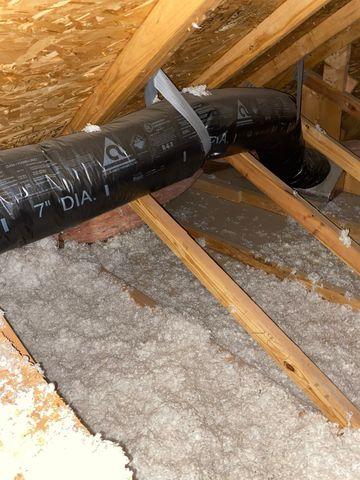
Attic Before
The existing insulation in the attic was inefficient and had thin spots in different areas. This material would all be removed before air sealing and blowing in new Tru Soft Cellulose insulation.
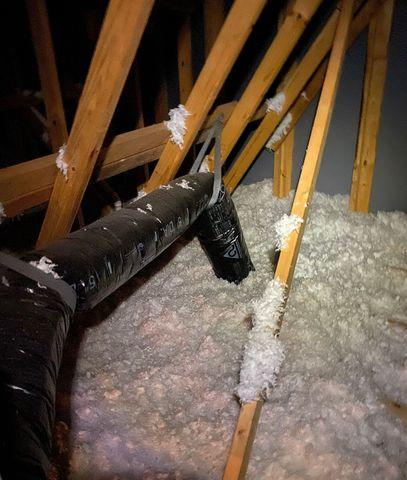
Old Insulation
This insulation was too thin to effectively insulate the attic and had thin spots throughout the attic space.
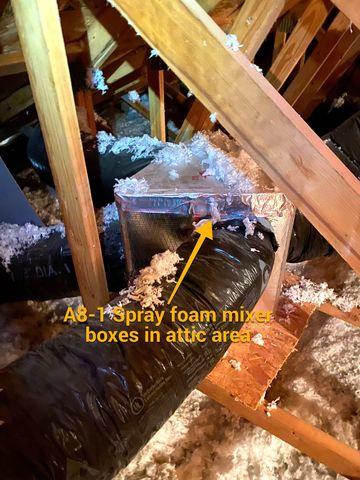
Attic Before
This HVAC duct system joint would later be insulated and sealed with spray foam. This will keep the conditioned air travelling inside from escaping.
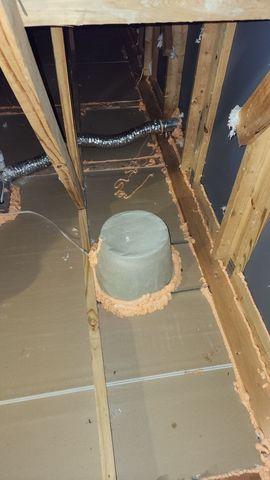
Air Sealing and Can Light Covers
Zyp Foam is used to air seal the gaps and cracks where air could previously escape the rooms below the attic. The can light cover is fire safe and will keep heat from the light it is covering from leaking into the attic.
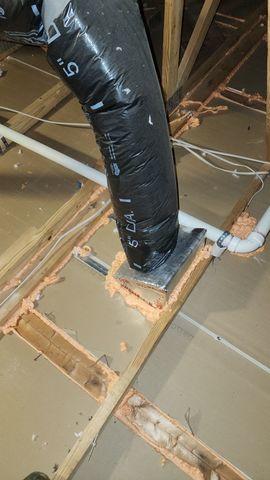
Air Sealing
Zyp Foam seals all of the gaps and cracks where any air could previously move from the spaces below the attic.
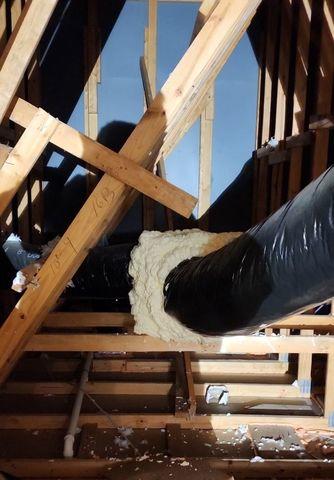
Spray Foam
The HVAC duct joint was sealed and insulated with spray foam to protect the conditioned air travelling inside from escaping.
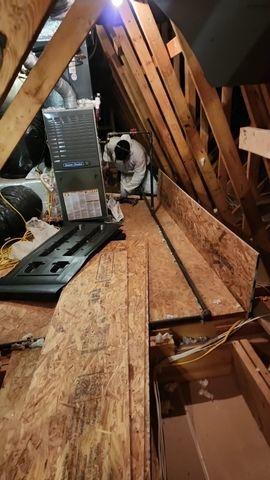
Service Decking in Progress
Our production crew built this service deck and walls to allow for HVAC unit access and to hold in the insulation.
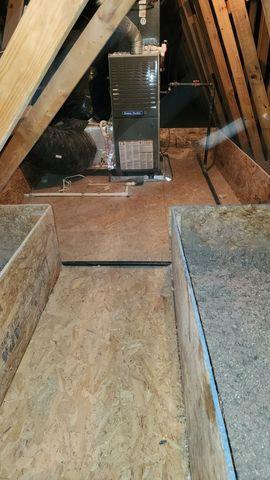
Service Decking
This platform was built into the attic in order for access to the HVAC unit. The walls built up around it will help to work as a damn keeping the insulation in place.
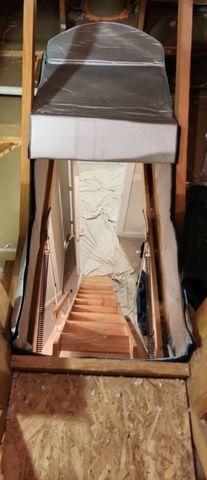
Attic Hatch Cover
This hatch cover will help to seal up the entrance to the attic space. It zips closed and will help to prevent any air loss around the attic door.
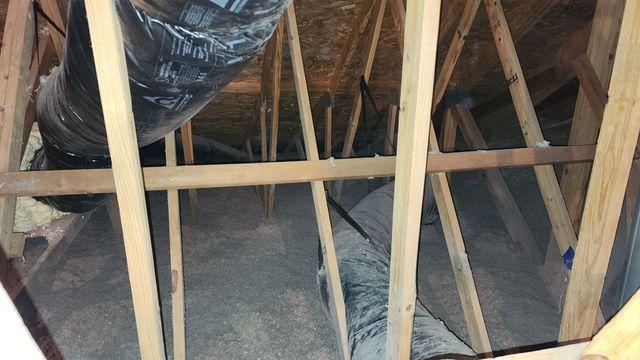
Cellulose blown Insulation
Tru Soft cellulose insulation was blown in to cover the attic floor and fill the space with the proper amount of insulation to effectively insulate.

